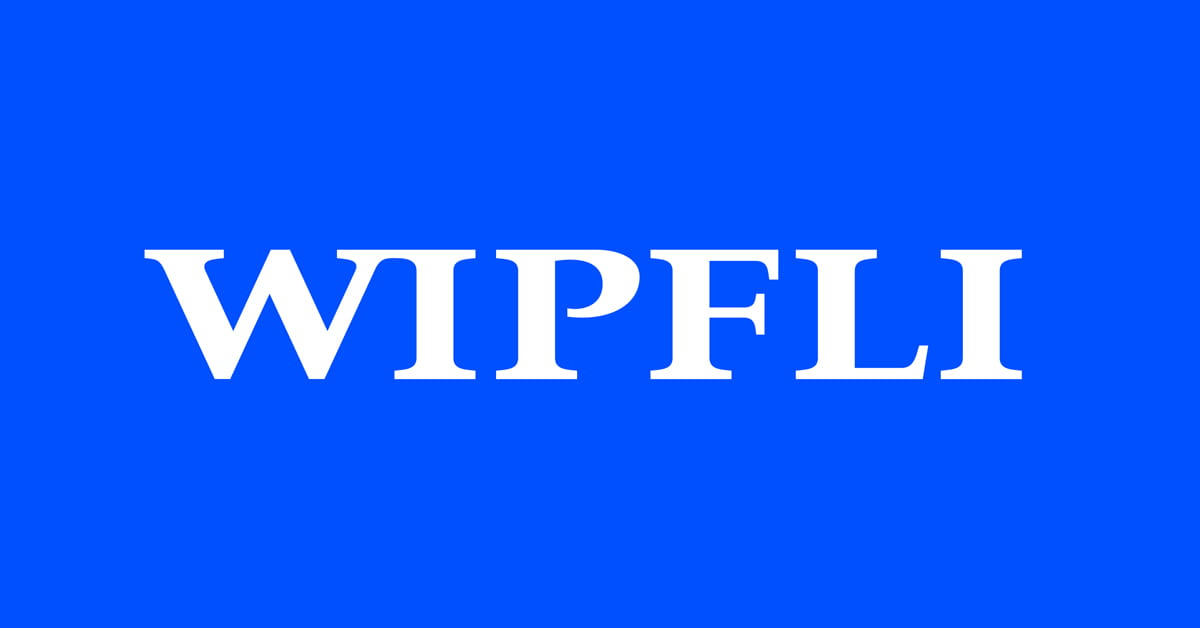SOC 1 vs. SOC 2: What’s the difference?

If your company specializes in offering outsourced technology services, you’re likely to be asked by customers for a due diligence package. This package — which is meant to give current or potential customers a strong level of assurance when it comes to the security and transparency of your internal operations — will typically include a recently performed SOC 1 or SOC 2 report. These reports are part of the broader System and Organization Controls (SOC) frameworks established by the American Institute of Certified Public Accountants (AICPA).
Understanding the purpose of SOC 1 and SOC 2 reports, including their role in cybersecurity compliance, and the difference between SOC 1 and SOC 2 can help you create a comprehensive due diligence package that gives customers the peace of mind they’re looking for. But what is SOC 1 and SOC 2, and how do they differ? Let's explore the various SOC report types and their significance in financial reporting and data protection.
SOC 1 vs. SOC 2
| SOC 1 | SOC 2 | |
|---|---|---|
| Purpose | A SOC 1 audit helps a service organization examine and report on its internal controls relevant to its customers’ financial statements and financial reporting. | A SOC 2 audit examines and reports on a service organization’s internal controls relevant to the security, availability, processing integrity, confidentiality and/or privacy of customer data. It’s often referred to as a cybersecurity SOC or SOC for cybersecurity. |
| Control objectives | A SOC 1 audit’s control objectives cover controls around processing and securing customer information, spanning both business and IT processes, including Internal Control over Financial Reporting (ICFR). | A SOC 2 audit’s control objectives cover any combination of the five criteria. For example, some service organizations may cover security and availability, while others may be required to be examined over all five criteria due to the nature of their operations and regulatory requirements. These often include cybersecurity controls and objectives. |
| Example use | A company offering outsourced payroll services. Customers who ask to conduct an audit of payroll processing and data security controls can be given a SOC 1 report instead. | A data center offering its customers a secure data center for their critical infrastructure. Instead of having customers perform frequent on-site inspections, the data center can give them a SOC 2 Type 2 report that describes and validates controls in place, including cybersecurity measures. |
| Readers and users | Readers and users of SOC 1 reports often include the customer’s management and external auditors. They are specifically intended for a user entity and the CPAs that audit its financial statements, helping them understand the effect of the service organization’s controls on the user entity’s financial statements. The auditor's opinion in a SOC 1 report is crucial for assessing the reliability of financial reporting processes. | Readers and users of SOC 2 reports often include the customer’s management, business partners, prospective customers, compliance regulators and external auditors. SOC 2 reports are often used for oversight of the service organization, vendor management programs, internal corporate governance and risk management processes, and regulatory oversight particularly in relation to cybersecurity compliance and data protection. |
SOC 1
Undergoing a SOC 1 audit helps a service organization examine and report on its internal controls relevant to its customers’ financial statements. This process is part of the broader SOC program established by the AICPA.
A SOC 1 report falls under the Statement on Standards for Attestation Engagements (SSAE) 18 AT-C Section 320 (formerly known as SSAE 16 or AT 801) established by the American Institute of Certified Public Accountants (AICPA). These attestation reports provide valuable insights into an organization’s financial control environment.
When preparing to undergo a SOC 1 audit, a service organization is responsible for determining key control objectives for the services provided to its customers. Control objectives relate to both business processes (e.g., controls around processing customers’ information) and information technology processes (e.g., controls around securing customers’ information).
An example of a service organization needing a SOC 1 report is a company offering outsourced payroll services. When approached by customers for rights to conduct an audit of their payroll processing and data security controls, the outsourced payroll provider may instead offer them a completed SOC 1 type 2 report as a testament to having strong internal controls in place that were examined by an independent CPA firm.
Readers and users of SOC 1 reports often include the customer’s management, compliance regulators and external auditors. The auditor opinion provided in these reports is crucial for assessing the effectiveness of Internal Control over Financial Reporting (ICFR)
SOC 2
A SOC 2 report also falls under the SSAE 18 standard, Sections AT-C 105 and AT-C 205. But the difference from SOC 1 is that the SOC 2 report addresses a service organization’s controls that are relevant to their operations and compliance, as outlined by the AICPA’s Trust Services Criteria. This makes SOC 2 particularly relevant for cybersecurity audits and compliance.
Undergoing a SOC 2 audit helps a service organization examine and report on its internal controls relevant to the security, availability, processing integrity, confidentiality and privacy over customer data. This process is often referred to as SOC for cybersecurity or a cybersecurity SOC examination.
When preparing to undergo a SOC 2 audit, a service organization is responsible for determining which Trust Services Criteria are relevant to the services offered to its customers. For example, some service organizations may have their SOC 2 audit conducted relevant to the Trust Services Criteria of security and availability, while others may find themselves required to be examined over all five Trust Services Criteria due to the nature of their operations and regulatory requirements. These criteria often include specific cybersecurity controls and objectives, especially in the context of cloud computing and data protection.
An example of a service organization needing a SOC 2 report is a data center offering its customers a secure storage location for their critical infrastructure. Instead of having its customers perform frequent on-site inspections of its physical and environmental safeguards, the data center may instead provide them with a SOC 2 Type II report that describes and validates controls in place around the security and availability of the customer’s critical infrastructure stored within the data center. This report would include details about the data center's cybersecurity measures and risk mitigation strategies.
Readers and users of SOC 2 reports often include the customer’s management, business partners, prospective customers, compliance regulators and external auditors. These reports are crucial for demonstrating cybersecurity compliance and providing independent validation of an organization's cybersecurity risk management program.
SOC 3
In addition to SOC 1 and SOC 2, there's also a SOC 3 report. The SOC 3 report is similar to SOC 2 but is designed for general use and can be freely distributed. When comparing SOC 2 vs SOC 3, the main difference lies in the level of detail provided. SOC 3 reports offer a high-level overview of an organization's controls without the technical specifics found in a SOC 2 report. SOC 3 compliance is often sought by organizations looking to publicly demonstrate their commitment to security and privacy.
SOC type 1 vs. type 2
Once a service organization determines which SOC report fits its reporting needs, it has two options on how to move forward: Type 1 and Type 2. These options depend on how prepared the service organization is for the SOC audit and how quickly it needs to have the SOC audit performed.
A Type 1 SOC audit may be a good option when a service organization: 1) has never been audited or 2) just went through a substantial revamp and enhancement of its internal controls, policies and procedures but was also asked by its customers or prospects to undergo a SOC audit as soon as possible.
A Type 1 SOC audit evaluates and reports on the design of controls and procedures put in place as of a point of time. Undergoing a Type 1 SOC audit allows a service organization to examine and report on its controls’ design as of a specific date that fits the requested party’s SOC audit timeliness requirements.
A Type 2 SOC audit takes the process described above a step further and provides a service organization with an opportunity to report on its controls’ operating effectiveness over a period of time, in addition to the controls’ design. This is why you’ll often see references to SOC 2 Type 2 reports, which provide a more comprehensive assessment of an organization’s controls.
Undergoing a type 2 SOC audit allows a service organization to examine how its controls operated over a six- to 12-month period, providing its customers or prospects with an additional level of visibility into its internal controls, policies and procedures. This type of audit is particularly valuable for demonstrating ongoing cybersecurity compliance and the effectiveness of cybersecurity controls over time.
To achieve the most value and benefit out of a Type 2 SOC audit, a service organization should strive to have its SOC audit cover a 12-month period, as well as have its SOC audit performed annually going forward to help establish transparent and continuous coverage and validation of the internal controls in place.
SOC 1 vs. SOC 2: Are you ready?
For service organizations unfamiliar with SOC audit requirements, it can be a challenge to determine which SOC audit and what type a customer truly needs. But service organizations benefit from being able to provide current and prospective customers with assurance that their data is in the right hands, being safeguarded properly — so if you have never undergone a SOC audit, now is the time.
It’s important to note that while SOC 2 is often associated with cybersecurity, there are other frameworks like ISO 27001 and the NIST Cybersecurity Framework that organizations might also consider. A comprehensive cybersecurity risk assessment process should inform which standards and certifications are most appropriate for your organization.
As a CPA firm, Wipfli has extensive experience performing SOC audits for service organizations and can help you pick the right exam option that fits your needs. Our SOC consulting services can guide you through the process, from initial readiness assessment to final cybersecurity attestation. We can also advise on SOC 2 compliance automation to streamline your ongoing compliance efforts.
Learn more about our Technology risk advisory services, or keep reading on about SOC audits:
- HITRUST vs SOC 2 Leveraging Best Path to Assurance
- 5 top challenges for internal auditors
- Examining the value of complementary user entity controls within SOC reports





